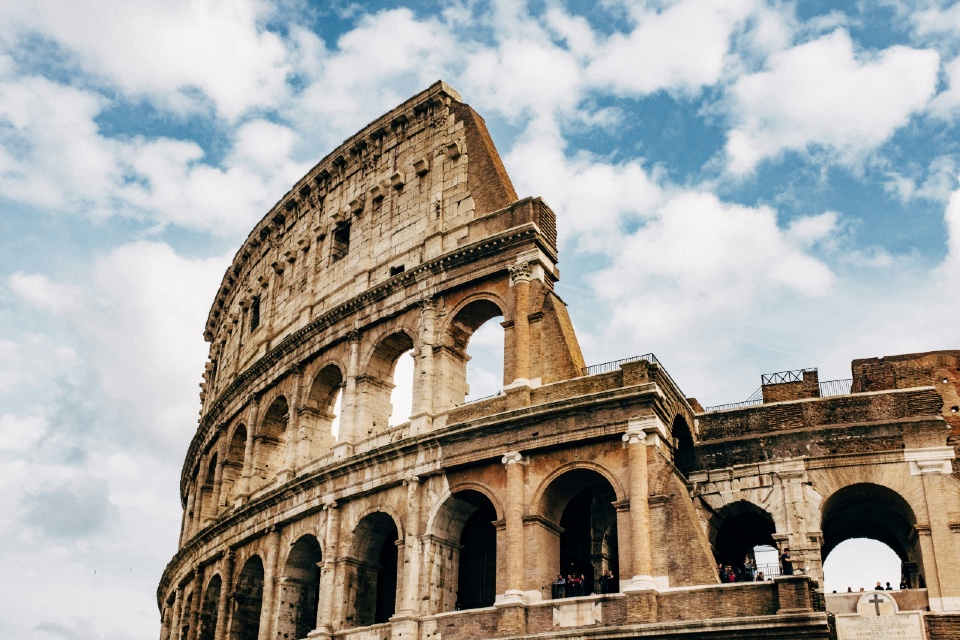Ever wondered how the Ancient Romans were able to build aqueducts, grand bath houses and more? Curious about how the Egyptians protected their great pyramids from water ingress? Perhaps how medieval peasants kept water out of their kitchen?
For thousands of years, humans have found ways to protect ourselves and our abodes from rain – and they’ve become increasingly ingenious over the years. Here, the tiling experts at Instarmac take a look back at waterproofing through history – and a glance ahead to the waterproofing of the future!
Earliest date
You probably won’t be surprised to learn that the genius minds living in some of Earth’s ancient civilisations were amongst the first to use and apply waterproofing technology. Naturally occurring bitumen – a highly viscous, sticky black liquid or solid form of petroleum used as a key ingredient in modern-day asphalt – was used to waterproof items as early as the fifth millennium BC!
By 3000 BC, waterproofing technology was already supporting some huge projects, such as the Great Bath, in modern-day Pakistan, described as “the earliest public water tank of the ancient world.” In Ancient Egypt, similar techniques were used on the Great Pyramid at Giza to protect against water damage.
Later still, the ever-resourceful Romans had a similar idea, adding aggregates in the form of broken pots, tiles or bricks to their concrete mix to provide a waterproof mix that was used for bath houses, viaducts and more.
Middle Ages
By the Middle Ages, commercial waterproofing had reached the UK, where a range of methods were being used on kingly castles and houses for peasants. Peasant homes were constructed using wattle and daub, which consisted of a combination of wattles (a lattice of wooden strips) and daub, a mixture of clay, sand, straw and water.
This combination provided the average person with some protection against the elements, while thatched roofs helped drive water away from the house itself.
In castles and forts, we saw similar approaches with more robust, permanent materials – these typically used stone masonry for gutters and drainpipes to direct water away from the castle and sometimes into the moat. Wooden structures within would then be treated with natural oils for protection against water ingress.
19th century
It took until the 19th century for the UK to have any sort of concrete that could compete with the Romans’ recipe from centuries before – and the formulation of Joseph Aspdin’s Portland Cement in the early 19th century represented a huge new breakthrough for building and waterproofing.
Soon, engineers were experimenting with hydraulic cement, which could set underwater – a huge help for dam or reservoir builders.
The invention of Vulcanised Rubber by Charles Goodyear in the 1830s represented another key leap. The process of strengthening rubber with Sulphur and heat helped legitimise rubber sheets and coatings as a viable method for waterproofing.
20th century
The 20th century saw new materials, such as PVC and polyurethane, revolutionise the world of waterproofing. Here, we saw a marked departure from combining natural materials like bitumen and clay, moving instead to entirely engineered substances designed to provide maximum protection from water in any scenario.
Using synthetic polymers to provide flexibility, durability and chemical resistance, these are the waterproofing materials we’ve come to know today – and the ones you’ll see throughout your own home.
Making the switch to these specialised substances has allowed us to tailor the level of waterproofing according to our required purpose. Whether you need a substance that cures quickly, offers more flexibility or lasts longer, there’s a specific material out there for you!
Looking ahead to the future
The future of waterproofing is bright, too. Since the Industrial Revolution, the rate of innovation in waterproofing (and pretty much any other sector) has accelerated exponentially. We’re already looking to improve on new materials that have only been in use since the turn of the century!
Nanotechnology is already being used in waterproofing, though you can expect to see an expansion of what’s possible with nanotech in the coming years. Forming an invisible, breathable waterproof layer, nanotechnology consists of ultra-small hydrophobic nanoparticles that repel surface water at a surface level.
Looking even further forward, we might see an expansion of our smart cities – we already have self-healing concrete that can sense cracks within itself. As part of our smart city architecture, we might see buildings that have integrated waterproofing to sense water ingress. We might even see these cities combined!
So, it’s safe to say we’ve come a long way from using naturally occurring bitumen to waterproof our homes and belongings. It’s also safe to say that technological innovation is taking place at a faster rate than ever nowadays! So, expect to see more exciting waterproofing innovations than ever going forward.
Photo by David Libeert on Unsplash







